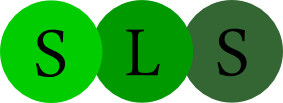The Digital Media Commons and the Digital Literacy Center Collaborate: References
Kimberly M. Cuny, University of North Carolina at Greensboro
Sara Littlejohn, University of North Carolina at Greensboro
Kathy Crowe, University of North Carolina at Greensboro
Accardi, Maria T., Cordova, Memo, & Leeder, Kim. (April 1, 2010). Reviewing the library learning commons: History, models, and perspectives. College & Undergraduate Libraries, 17.
Bailey, Donald Russell, & Tierney, Barbara. (2008). Transforming library service through information commons: Case studies for the digital age. Chicago: American Library Association.
Beagle, Donald Robert, Bailey, Donald Russell, & Tierney, Barbara. (2006). The information commons handbook. New York: Neal-Schuman Publishers.
Cuny, Kimberly M., Ellis, Erin D., Littlejohn, Sara, Whitaker, Jennifer, & Yarbrough, Stephen. (2011). Towards comprehensive communication consulting at UNCG: Establishing a digital communication center. Unpublished manuscript.
Doan, Tomalee, & McGee, Melinda. (2013). The librarian and the designer: Working together to create a showcase for contemporary learning. In Carpenter, Russell (Ed.), Cases on higher education spaces: Innovation, collaboration, and technology (pp. 265-288). Hershey, PA: IGI Global.
Elmborg, James. (2006). Locating the center: Libraries, writing centers, and information literacy. The Writing Lab Newsletter, 30(6), 7-11. Retrieved from http://ir.uiowa.edu/slis_pubs/5/
Geller, Anne E., Eodice, Michele, Condon, Frankie, Carroll, Meg, & Bouquet, Elizabeth H. (2007). The everyday writing center: A community of practice. Logan, UT: Utah State University Press.
Gresham, Morgan. (2010). Composing multiple spaces: Clemson’s class of ’41 online studio. In Sheridan, David M., & Inman, James A. (Eds.), Multiliteracy centers: Writing center work, new media, and multimodal rhetoric. (pp. 33-58). Cresskill, NJ: Hampton.
Inman, James A. (2010). Designing multiliteracy centers: A zoning approach. In Sheridan, David M., & Inman, James A. (Eds.), Multiliteracy centers: Writing center work, new media, and multimodal rhetoric. (pp. 19-32). Cresskill, NJ: Hampton.
Kress, Gunther. (1999). “English” at the crossroads: Rethinking curricula of communication in the context of the turn to the visual. In Hawisher, Gail, & Selfe, Cynthia. (Eds.), Passions, pedagogies, and 21st century technologies (pp 66-88). Logan, UT: Utah State University Press.
Lee, Sohui, Alfano, Christine, & Carpenter, Russell. (2013). Invention in two parts: Multimodal communication and space design in the writing center. In Carpenter, Russell. (Ed.), Cases on higher education spaces: Innovation, collaboration, and technology (pp. 230-247). Hershey, PA: IGI Global.
Lind, Stephen J. (2012). Teaching digital oratory: Public speaking 2.0. Communication Teacher, 26(1-4), 163-169.
Littlejohn, Sara, & Cuny, Kimberly M. (2013). Creating a digital support center: Foregrounding multiliteracy. In Russell Carpenter (Ed.), Cases on Higher Education Spaces: Innovation, Collaboration, and Technology (pp. 87 - 106) Hershey, PA: IGI Global.
Lippincott, Joan K. (2007, November/December). Student content creators: Convergence of literacies. EDUCAUSE Review, 42(6), 16-17.
MacPhee, Maura, Wardrop, Andrea, & Campbell, Cheryl. (2010). Transforming work place relationships through shared decision making. Journal of Nursing Management, 18, 1016-1026.
McKinney, Jackie Grutsch. (2010). The new media revolution: Multiple modules for multiliteracies. In Sheridan, David M., & Inman, James A. (Eds.), Multiliteracy centers: Writing center work, new media, and multimodal rhetoric. (pp. 207-223). Cresskill, NJ: Hampton.
Moreau, Michelle A., & Normand, Paige A. (2012). Technology tutoring: Communication centers take the lead. In Yook, Eunkyong L. & Atkins Sayre, Wendy (Eds.), Communication centers and oral communication programs in higher education: Advantages, challenges, and new directions (pp. 233-248). Lanham, MD: Lexington.
Newcomb, Matthew. (2012). Sustainability as a design principle for composition: Situational creativity as a habit of mind. College Composition and Communication, 63(4), 593-615.
New London Group. (1996). A pedagogy of multiliteracies: Designing social futures. Harvard Educational Review, 66(1), 60-92.
Parrish, Marilyn McKinley, & Szczyrbak, Greg. (2013). Re-envisioning the Millersville University library: Center for knowledge creation and interdisciplinary collaboration. In Carpenter, Russell (Ed.), Cases on higher education spaces: Innovation, collaboration, and technology (pp. 230-247). Hershey, PA: IGI Global.
Pensoneau-Conway, Sandra L., & Romerhausen, Nick J. (2012). The communication center: A critical site of intervention for student empowerment. In Yook, Eunkyong L. & Atkins Sayre, Wendy (Eds.), Communication centers and oral communication programs in higher education: Advantages, challenges, and new directions (pp. 39-54). Lanham, MD: Lexington.
Selber, Stuart. (2004). Multiliteracies for a digital age. Carbondale, IL: Southern Illinois University Press.
Sheridan, David M. (2006). Words, images, sounds: Writing centers as multiliteracy centers. In Murphy, Christina, & Byron L. Stay (Eds.), The writing center director’s resource book (pp. 339-350). Mahwah, NJ: Lawrence Erlbaum Associates.
Vizzier, Alex. (2006). Confronting the anxiety monster. M.A. capstone, The University of North Carolina at Greensboro, North Carolina.
Wenger, Etienne. (2008). Communities of practice: Learning, meaning, identity. New York, NY: Cambridge University Press.
Figure 1: Mike Crumpton
Figure 2: Mike Crumpton
Figure 3: Mike Crumpton
Figure 4: Kim Cuny
Figure 5: Taylor Williams
Figure 6: Doug Mokaren
Figure 7: Taylor Williams
Figure 8: Doug Mokaren
Figure 9: Doug Mokaren
Figure 10: Doug Mokaren
